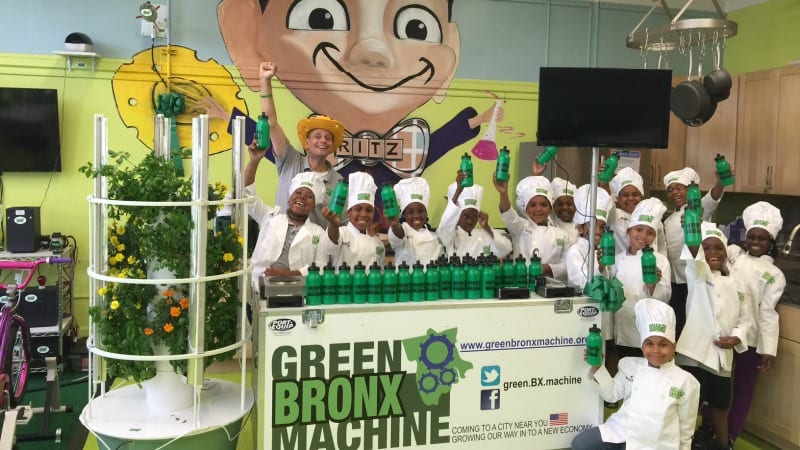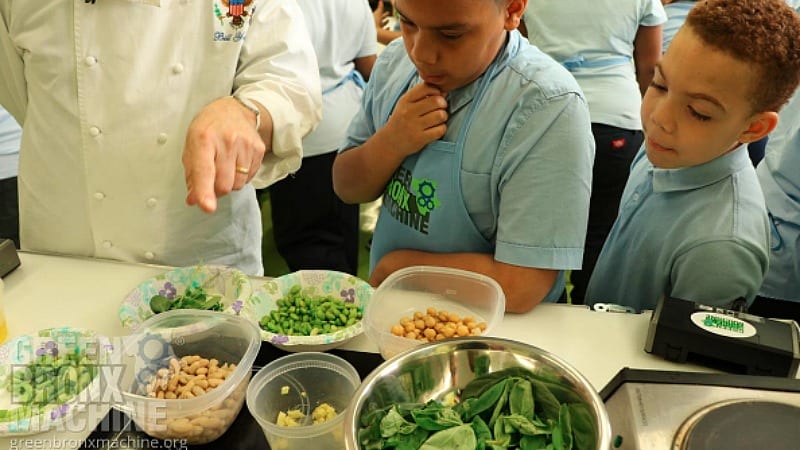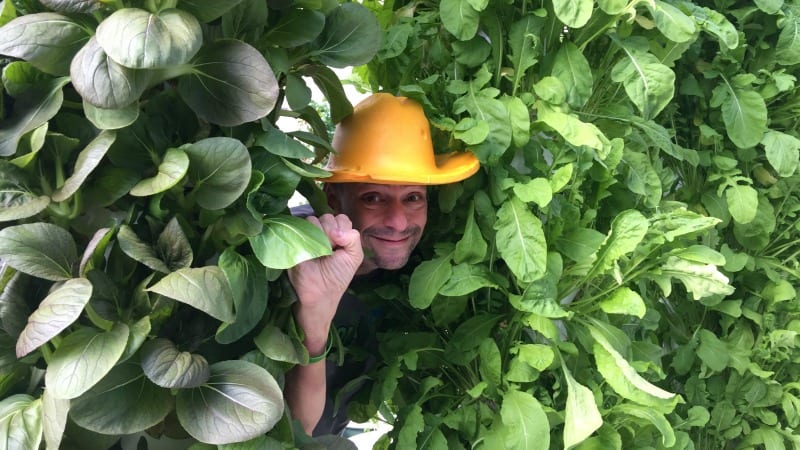Stephen Ritz is proof that you can make magic happen with little to no resources. He created a school garden in a South Bronx neighborhood that’s grown more than 40,000 pounds (and counting) of veggies.
Stephen has received dozens of accolades for his school garden and chronicles his story in The Power of a Plant: A Teacher’s Odyssey to Grow Healthy Minds and Schools. He created the first indoor edible classroom in the New York City Department of Education where students grow food year-round. Gardening has revitalized the neighborhood and helped give his students jobs, healthy food, and positive after-school activities.
We caught up with Stephen, who now runs the Green Bronx Machine, to talk about how he first got started gardening with students. It’s definitely not what you think.

Have you always been a gardener?
I have no background in plants and gardening. I come from a completely urban background.
What’s your background in teaching?
I spent years as a special ed teacher, working for years with kids that were in high-need areas. I had a series of tragedies in my life, including losing a student to leukemia, so I moved back home after these tragedies so I could be near family.
Is that when you got a job at the local high school?
Yes. I wanted to stay close to home, so I took a job at a high school that I could walk to. I didn’t realize it at the time, but it was one of the toughest neighborhoods in all of New York. A lot of my students were overaged and undercredited. They were wonderful students, but they weren’t equipped like a lot of high school students.
How did you get started gardening at your school?
I got this box full of onions at school. I had no idea what I was supposed to do with them, so I put them behind a radiator and forgot about them. Well a few weeks later, a couple of students were having an altercation in my class—which was pretty typical—and this female student throws something at a male student, which knocks over the box of onions.
Out of the box comes this golden flower, which the boy picks up and presents to the girl. (I didn’t know it at the time, but it was a daffodil.) The boy gives this flower to this girl, and it totally stuns her. The whole class is like WTF. And that is what I like to call a teachable moment in the South Bronx.
So you had a box of daffodils and didn’t even know it?
I did! After that incident, we opened up the box and did our homework. We found out that the daffodils had been sent to us, with encouragement to plant them to help commemorate 9/11.
Did you plant the daffodils?
My students and I planted 20,000 bulbs that year—both our own bulbs and then more by signing up to join other planting events. People loved seeing my students. They fell in love with them. They kept asking us to come back and do more work, so we did. Then employers started asking my students to become their employees.
Did your students like gardening?
My kids became totally famous in their little world. They became involved in a real green movement—they were part this critical movement in urban redesign in New York City. It was environmental revitalization.
How did this lead to bigger and better opportunities for your students?
They found out they could do jobs related to [planting and growing] that represented real living wage jobs. This was huge!
So it wasn’t long after that you started a school garden for veggies, right?
Yes. When we started, we didn’t even really know what vegetables were. We really had no idea that you can grow food. We didn’t really know where food came from.

What do you mean by that?
It was easier to get liquor in that neighborhood than to get lettuce. Plus a lot of my students either were someone or knew someone that grew up hungry or got their food at a soup kitchen. So this notion that you can grow and eat your own food was a big deal.
How did your school garden efforts grow over the years?
When I got started with those first students, we met this older gentleman in the neighborhood who took us in and taught us about growing food. After that, we looked at indoor planting, vertical farming, and indoor technology. We even found out how to grow without dirt or soil.

How did gardening transfer to results at that first school?
It helped move the graduation rate from 17 percent to 100 percent. It also helped improve the attendance rate to 93 percent.
What’s your advice for teachers who want to build a school garden with their students?
If you show up with passion, purpose, and hope, then amazing things can happen. I regularly get 50 kids coming to tend to a garden in the heart of New York City. Anyone can do it.

If you’ve ever thought about creating a school garden with your students, check out the grants and programs section of KidsGardening.org. They feature current grants, tips for getting support, and more.

